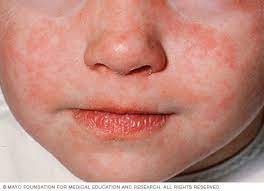For over 700 years, pandemics have disrupted lives and prompted authorities to implement measures like isolation and quarantine to prevent the spread of infectious diseases. From the Black Death in the 14th century to COVID-19 in the 21st, these protective steps, though life-saving, have also led to unrest, confusion, and resistance. The recurring challenge has been public health communication—how effectively authorities convey critical information and persuade people to adopt necessary measures.
In an era of growing misinformation and distrust, the key question is: how can we improve public health messaging for future pandemics?
The Importance of Public Trust
A major takeaway from the global experience with COVID-19 is the vital role of public trust in governments and health authorities. Research suggests that higher levels of trust were associated with lower infection rates and higher vaccination uptake. Trust, therefore, emerged as a key predictor of whether people adhered to public health directives.
In Australia, public trust initially surged due to clear and unified communication from state, territory, and federal governments. The National Cabinet, formed in 2020, ensured consistency in pandemic response across the country, fostering a sense of unity and confidence among citizens. During this phase, Australians reported higher levels of trust in their government and public health authorities.
However, as the pandemic wore on, conflicting policies and public health messages between states—such as the diverging strategies of Victoria and New South Wales—led to confusion, eroded trust, and a decline in public confidence. This inconsistency made it harder for authorities to engage the public, leading to reduced adherence to health measures.
Our findings show that clear, consistent, and unified communication is crucial during a public health crisis. When different governments or agencies present conflicting information, people are less likely to comply with health directives.
Countering Misinformation
The rise of misinformation, particularly through social media, has complicated public health efforts during pandemics. COVID-19 saw the rapid spread of false claims about unproven treatments, such as ivermectin, an anti-parasitic drug. Despite lacking evidence as a treatment for COVID-19, ivermectin gained widespread popularity, leading to increased demand and hospitalizations from overdoses.
Australia’s drug regulator was eventually forced to ban the off-label prescription of ivermectin for COVID-19 after a sharp rise in usage. This highlights the urgent need for governments and health authorities to combat misinformation in real time. The Lancet Commission, reflecting on lessons from the COVID pandemic, has called for coordinated international efforts to tackle misinformation, including investment in scientific literacy and the development of resources by the World Health Organization to address what has been termed an “infodemic.”
In Australia, the Australian Medical Association (AMA) has urged the federal government to invest in long-term strategies to combat online health misinformation. This includes advertising campaigns to boost health literacy and public understanding of where to find credible health information.
People of all ages need to be equipped with critical thinking skills to assess the reliability of health information, especially as artificial intelligence makes it easier for misinformation to proliferate online.
Looking Ahead: A Role for the Australian CDC
Australia’s health ministers have reaffirmed their commitment to establishing the Australian Center for Disease Control (CDC), an institution that could play a key role in pandemic preparedness and response. From a communication standpoint, the Australian CDC could serve as an independent voice, providing evidence-based information that transcends partisan politics and fosters trust in science.
As we look ahead, the key principles of effective public health communication remain unchanged—tailored, timely, clear, consistent, and accurate information is critical. However, the rise of misinformation and public distrust presents new challenges that must be addressed. Efforts to counter these forces will need to be central to any future pandemic response.
In a world where misinformation can spread rapidly, building public trust and ensuring people receive accurate information is essential for protecting public health. Governments, health authorities, and media must work together to tackle these challenges, ensuring that public health communication is equipped for the crises of the future.












